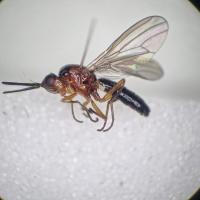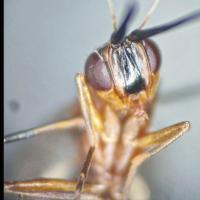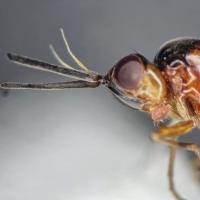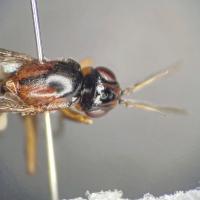Can't be certain these are the same people, but I think you can contact Carl Farmer via the address here:
www.plant-identification.co.uk/skye/botany
and Ian Strachan via:
Hello Martin, So many thanks for your very helpful reply! I will try those links and let you know what transpires. Thanks for your help.
Boyd Barr
Hello again Martin,
Your help has been invaluable, Made contact with Ian Strachan, yet to get reply from Carl Farmer. Thank you once again.
Boyd Barr
Ray -
The old mycetophild handbook published by the RES in 1980 included various subfamilies (most of which have now been elevated to family rank). It did not cover the Mycetophilinae (which have recently been covered by Peter Chandler's new 2022 Handbook). Nor did it include the Sciaridae, which were the subject of Freeman's Handbook, published in 1983. There has been talk about a new sciarid handbook, but as far as I know, this is not yet anywhere near completion. Peter may be able to tell you more.
Cheers
Tony
This is a male Beris chalybata, family Stratiomyidae. The wing venation, with that small enclosed cell in the centre, is characteristic of the family.
chris.cathrine@caledonianconservation.co.uk is given as a contact e-mail address in one of their papers
Hello Boyd
Additional Scottish records include the following:
KEITH N.A. ALEXANDER 2014 A second Scottish record for Brachypalpus laphriformis (Fallén) (Diptera, Syrphidae) Dipterists Digest 2 21 (1): 76 Syrphidae
GEOFFREY WILKINSON 2010 Cheilosia psilophthalma Becker and Brachypalpus laphriformis (Fallén) (Diptera, Syrphidae) new to Scotland Dipterists Digest 2 17 (2): 165–167 Syrphidae
A third record was posted onto the UK Hoverflies Facebook Group but has not been included on the HRS online maps yet. 07/05/2020 from the Black Isle, Inverness by Paul Johnton. Supported by photographs so a good record; you can find the post by searching through the Facebook Group, if you are a member. Interestingly, the record was from an area of old pine forest so might be worth looking for larvae in rot-holes in broadleaf and pine trees. Seems to be a species that is on the up in Scotland and the same can be said for Mallota cimbiciformis too.
Hope this is of use.
Kind regards
Geoff
Hello M. Can't see the picture you refer to? Best starting point for other Diptera is probably 'The European Families of the Diptera - Identification, diagnosis, biology' by Pjotr Oosterbroek. For Devon you can't do better than consult the Devon Fly Group (see Diptera groups menu at the top of this page). For some reason these Fora have never caught on and attract few posts and even fewer responses. Facebook works for me with identifications a lot of the time. Others swear by Istagram but I haven't tried that.
I have uploaded the supporting images above (eventually), though they are rather large. Any assistance would be most appreciated with the identification. Kind regards, Ryan
Yes, from what I can see, this is Imantimyia sylvatica. The humeri look to be black rather than orange, which is not typical for this species, but Darwyn has noted that some Scottish specimens have darkened humeri, so we might well expect the same from Donegal!
Hi Tony, thank you for your confirmation. I am not familiar with the other species excluding I.albiseta which I find most often. Hopefully will come across a few other species in the future. The black humeri was an unusual feature in this species i wonder if most individuals have black humeri in the the north west.
Can you post a dorsal view, showing the spots on the abdomen? My 3 specimens, including 1 female have significantly darkened legs.





That address is incorrect. It should be DavidJGibbs6@Sky.com